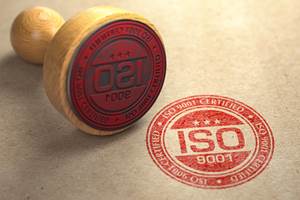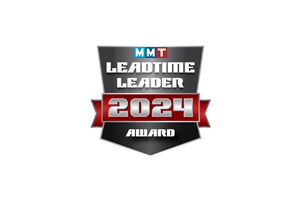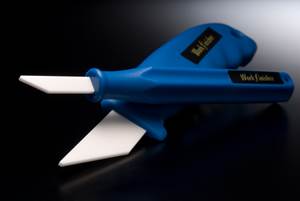Headed to K?
K 2019 will be host to 100 exhibitors from the U.S. and 18 from Canada while the number of attendees traveling from North America to this international trade show for plastics and rubber in Düsseldorf, Germany, is expected to hit 8,500. I will be visiting the show again this year to report back to you what I see and hear.
According to K 2019 show organizers there is no better time than now to take a closer look at the economic situation in North America and the local market conditions for the plastics industry. So here it goes, see what you think about their report:
The North American plastics industry, led by the United States, is posting good business results this year. Sales, revenue and growth indicators are pointing up for the foreseeable future. Among the factors driving growth are the digital revolution in controls and machine communication which yields significant advances in process and automation capabilities, as well as benefits in productivity, manufacturing economy and quality; new and evolving markets that generate demand for plastics applications; and a pro-business climate in the U.S. that under President Donald Trump is characterized by lower federal taxes, increased government spending and a relaxation of many onerous regulations since 2017.
Cautious Economic Optimism
Analysts report that U.S. gross domestic product (GDP) posted a 3% increase in 2018 from 2017 and should expand 2 to 3% in 2019, a range that represents healthy growth but is not considered high enough to trigger inflation, prohibitive interest rates or “irrational exuberance” among investors, lenders and consumers that could lead to an economic contraction.
Some experts, however, anticipate that 2019 GDP results will be at the low end of that scale. According to The Balance, an online publication, U.S. GDP growth will slow to 2.1% in 2019 and decline to 1.9% in 2020 and 1.8% in 2021. The reasons stem from a predictable reduction in demand for goods and services that follows the healthy growth of the past two years, and to the side effects of what the publication calls Trump’s trade war, during which he imposed 10% tariffs on $200 billion (€224 billion) worth of products from China, and levied tariffs against other countries.
The president also ordered tariffs on imported steel and aluminum and renegotiated a trade agreement with Canada and Mexico that will replace NAFTA, the 25-year-old North American Free Trade Agreement, with a treaty known as USMCA, or the U.S.-Mexico-Canada Agreement. The impact of the steel and aluminum tariffs has been generally good for the balance sheets of U.S. producers of the metals and costly to most end-users. The verdict is still out on how successful USMCA will be. Though it has been signed by the leaders of the U.S., Canada and Mexico, the treaty must be confirmed by the legislatures of each country before it takes effect. At stake is $1 trillion (€1.12 trillion) of annual trade between the neighbors.
Another concern created by the tariffs on China and other countries is their cost to U.S. consumers in the form of reduced product availability, higher domestic product prices due to less competition, the passing along of tariff penalties by importers and supply disruptions. The New York Federal Reserve Bank, for example, estimates that the China tariffs alone cost U.S. consumers at least $6.9 billion (€7.7 billion) of income from January through November 2018, and possibly as much as $12.3 billion (€13.7 billion), depending on how the numbers are interpreted.
“We find that the U.S. tariffs were almost completely passed through into U.S. domestic prices, so that the entire incidence of the tariffs fell on domestic consumers and exporters … with no impact so far on the prices received by foreign exporters,” report the Fed economists. “We also find that U.S. producers responded to reduced import competition by raising their prices.”
Despite these concerns, U.S. manufacturing is poised for growth. The MAPI Foundation (Manufacturers Alliance for Productivity and Innovation) forecast last year that U.S. manufacturing as a whole will grow by an average of 2.8% per year between 2018 and 2021; spending on capital equipment will increase by an average of 6.8% annually during that period; and exports will rise by 6% per year.
All of this is good news for plastics, which, based on one metric, employment figures from 2012 to 2017, outperforms the U.S. manufacturing industry. During that period plastics manufacturing employment grew by 1.6%, while total U.S. manufacturing employment rose 0.9%, according to figures developed by the Plastics Industry Association (PLASTICS) and Probe Economics LLC.
In a report released late last year that covers results in 2017, PLASTICS states that plastics manufacturing generated 989,000 jobs in the U.S., a 2.4% increase from 2016, and 1.81 million jobs counting suppliers. The association’s “2018 Size and Impact Report,” an annual publication, puts the value of manufactured plastics shipments in 2017 at $432.3 billion (€484.1 billion), an increase of 6.9% from the year before. When suppliers are included, the value of shipments reached $590.6 billion (€661.4 billion), up 7% from 2016.
While it’s likely that industry growth will slow somewhat in the next three years, demand for plastics products in the U.S. and the rest of North America, along with the evolution of major end-use markets, could be enough to cushion the impact of an economic slowdown for processors and suppliers. The relative stability, and in some cases depreciation, of the U.S. dollar compared with other major currencies will keep American-made products competitive at home and in export markets. The short-term outlook for the U.S. plastics industry and North America generally, is positive.
For more information on K 2019, click here.
Related Content
VIDEO:"The Smith Boys" on How Moldmaking is an Innovation Machine
"The Smith Boys" AKA President of DME Peter Smith and Director of Sales, Scott Smith discuss why the moldmaking industry is an innovation machine and how it is crucial to remedying global supply chain issues.
Read MoreHow To Get Buy-In from Your Team for ISO 9001
Here are four tips for getting your team on board once you’ve decided to become ISO 9001 certified.
Read MoreFAQs: What Are the Leadtime Leader Awards?
Here are answers to some frequently asked questions about MoldMaking Technology's annual Leadtime Leader Awards competition.
Read MoreCeramic Deburring, Deflashing Tools Take Into Consideration Difficult Materials, Operator Safety
Boride Engineered Abrasives introduces its new mold polishing equipment, the Work Finisher Tool, which is lightweight, long lasting, won’t rust and is safer and easier to use.
Read MoreRead Next
How to Use Strategic Planning Tools, Data to Manage the Human Side of Business
Q&A with Marion Wells, MMT EAB member and founder of Human Asset Management.
Read MoreHow to Use Continuing Education to Remain Competitive in Moldmaking
Continued training helps moldmakers make tooling decisions and properly use the latest cutting tool to efficiently machine high-quality molds.
Read MoreReasons to Use Fiber Lasers for Mold Cleaning
Fiber lasers offer a simplicity, speed, control and portability, minimizing mold cleaning risks.
Read More_970x90 4.png;maxWidth=970;quality=90)













.jpg;maxWidth=300;quality=90)












